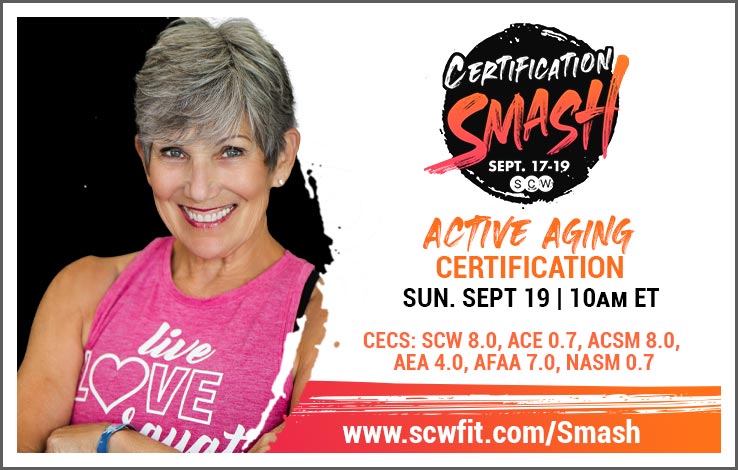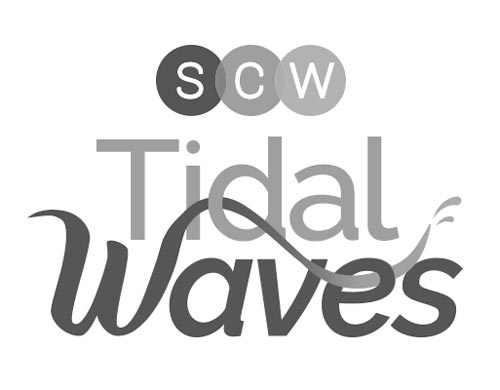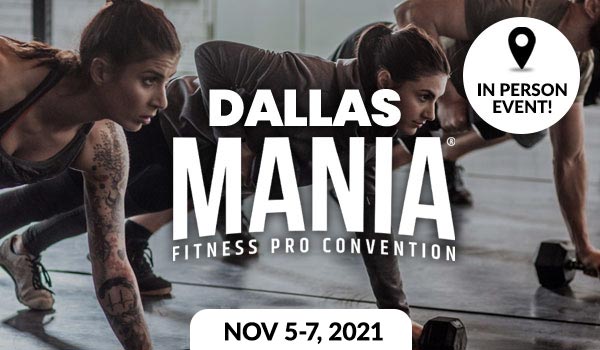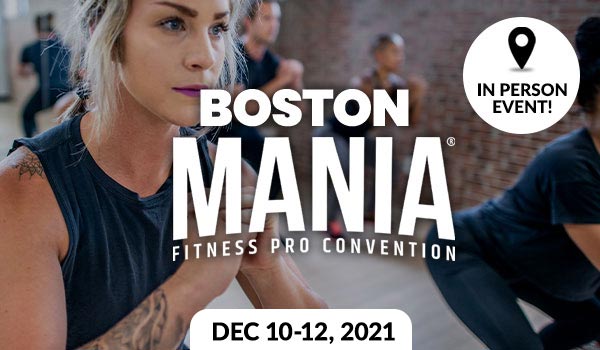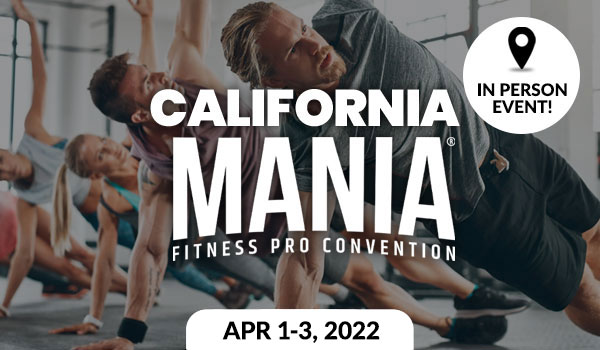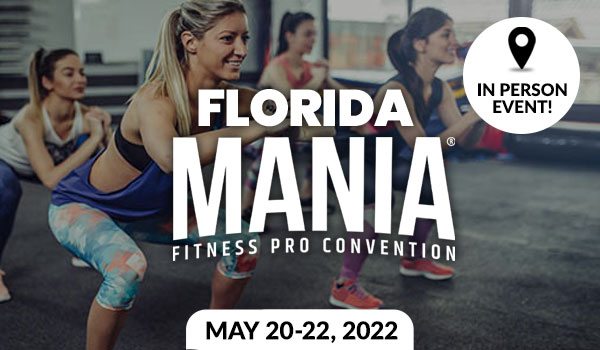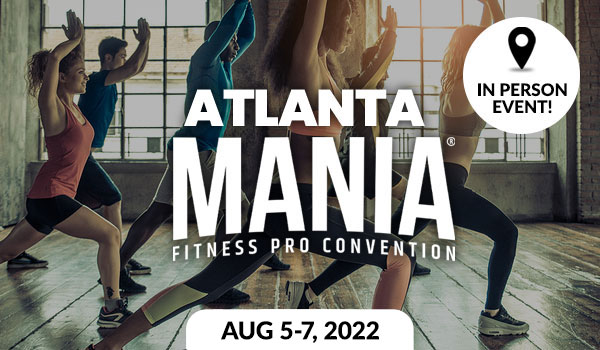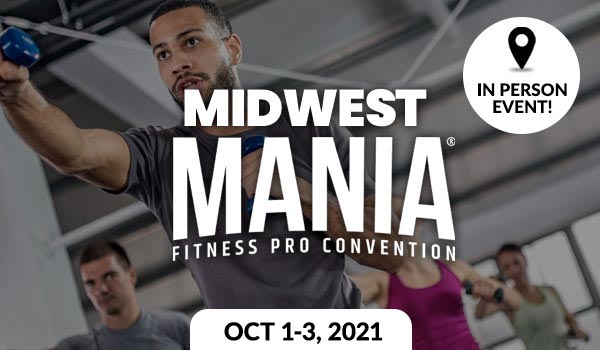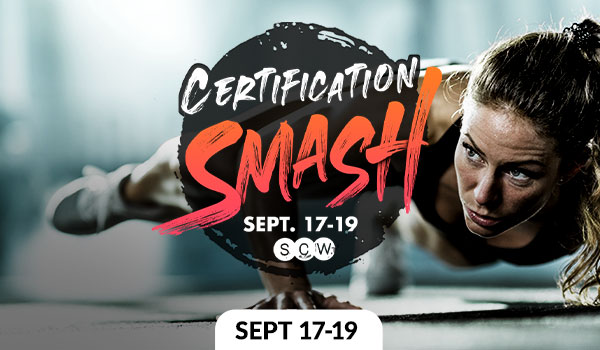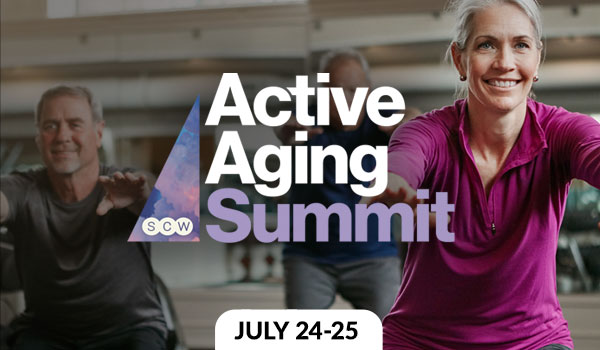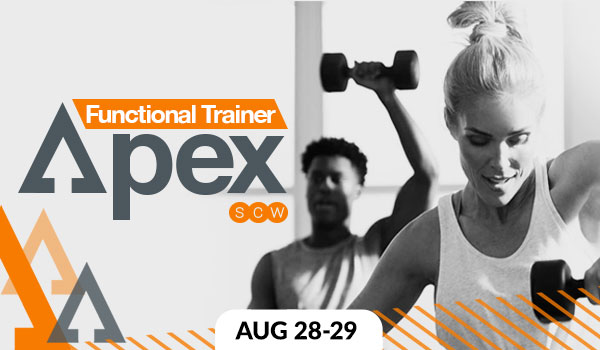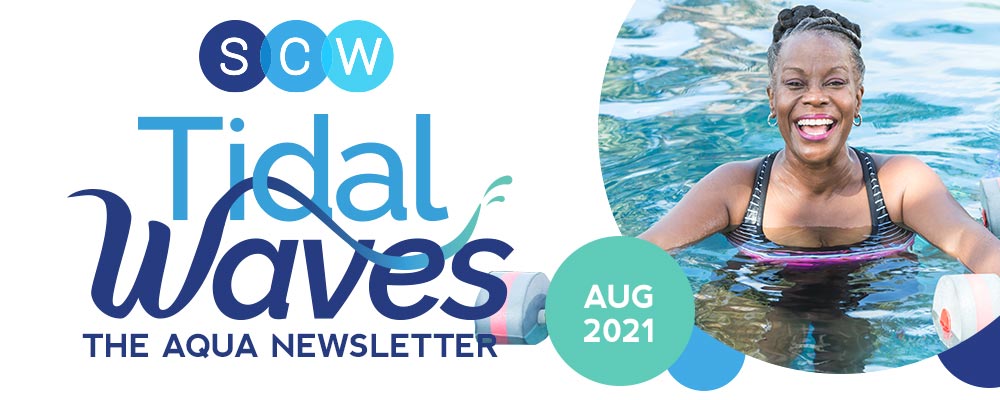
SCW Tidal Waves
August 2021
The Aqua Newsletter from SCW

Why Do We Need to Resistance Train?
by Cheri Kulp
What are the first words that pop out of your client’s mouth when you tell them it is time to resistance train? Maybe, it’s “I don’t want to look like The Hulk” or “No thanks, that’s for body builders.” Do you know how to respond to that? Let’s look at the reasons and benefits of using resistant equipment.
 Before determining if you even need resistance training let’s first answer the obvious question: What is resistance training? It can be best described as any form of exercise used to improve muscle strength, power, size, and endurance. Any movement that causes the muscles to contract against an external resistance. For example, dumbbells, rubberized bands, body weight, or water (which is 12x denser than air.) The benefits of strength training through resistance are a must for everyone.
Before determining if you even need resistance training let’s first answer the obvious question: What is resistance training? It can be best described as any form of exercise used to improve muscle strength, power, size, and endurance. Any movement that causes the muscles to contract against an external resistance. For example, dumbbells, rubberized bands, body weight, or water (which is 12x denser than air.) The benefits of strength training through resistance are a must for everyone.
Research shows that one in four persons over the age of 65 experiences a fall every year. As we age, our bodies lose both lean muscle mass and bone density. Along with other functional movements, these losses also mean less flexibility, balance, and reaction time during daily activities. Strength training with resistance can help our bodies maintain or enhance these functions. Not only does the musculature change, but postural improvement also occurs which consequently builds confidence and self-esteem.
BMI (Body Mass Index) usually increases as our lean muscle mass decreases. This can potentially result in a variety of health risks such as heart disease, hypertension (increased blood pressure), strokes, and Diabetes. Adding resistance training 2-3x weekly to an exercise schedule has been shown to not only reduce BMI, but also increase muscle size and strength. Lifting weights or using rubberized tubing requires energy along with oxygen. This energy comes from fats and carbohydrates stored in our bodies. As an added benefit, our oxygen uptake stays elevated after our workout is finished until our muscles return to a resting/recovery state, all the time burning fats and carbohydrates. This is known as EPOC (Excess Post-Exercise Consumption).
Cardio combined with strength training along with a balanced diet will assist with a weight-controlled lifestyle. Resistance training also helps our muscles’ ability to take in and use glucose, or blood sugar reducing the risk of Type 2 Diabetes. Joint pain after an injury or as we age can create an unwillingness to participate in many activities we once enjoyed. When muscles become weak, they begin to put extra stress on the connecting tissues and tendons.
Over time, this stress can result in injury, loss of mobility, and pain. Training with equipment not only improves muscle strength, but also increases the blood flow, fiber size, and connectivity in tendons surrounding a joint.
Busy lifestyles, death, stress, and uncertainty can cause a myriad of mental health issues including an increase in depression, anxiety, suicide, and loneliness. Often, cardiovascular training such as running, swimming, and biking is associated with “runner’s high” or increased endorphins, making us feel good. Research has shown that using low to moderate weights or other forms of resistance several times a week has a huge effect on anxiety. Plus, the atmosphere in a pool can relax the mind and boost self-esteem for those uncomfortable training on land.
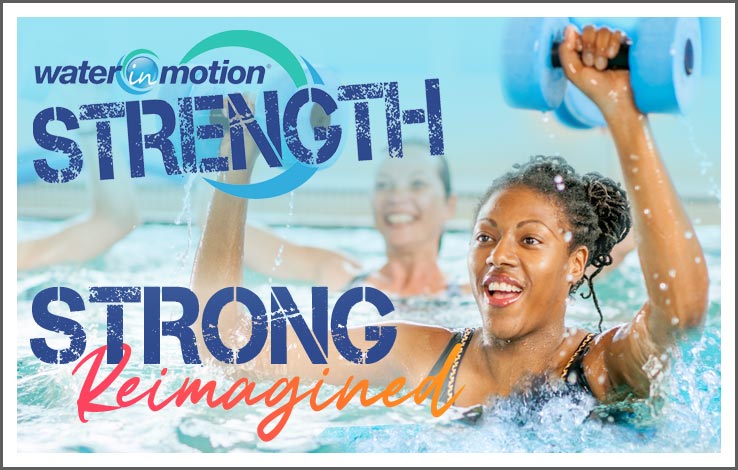 Other benefits of resistance training include:
Other benefits of resistance training include:
- Osteoporosis prevention and management- it helps build bone strength
- Boosted brain health
- Reduced cancer risks
- An increased lifespan
- An elevated body image- boosts confidence levels
Suggestions for starting a resistance training program:
- Start in small increments with body weight or light resistance
- Begin with 1 day and add slowly
- Rest when needed, increasing time slowly
- Experiment to see which form of training fits you or your client best
- Invest in yourself with a personal trainer or market your resistance training skills
- Increase time and weight/resistance as your confidence and endurance grows
- Stay committed even if you have setbacks and provide positive feedback to clients
So, whether your equipment is a dumbbell, band, the pool or body weight, there is definitely an option available for everyone. As a trainer, get to know your client and their goals. Resistance training can be adjusted for each individual. As a participant, just choose the method you feel most comfortable with, but still challenged. Before you realize, strength, function, musculature, and confidence will help you feel like a whole new person.
 About the Author, Cheri Kulp
About the Author, Cheri Kulp
Cheri Kulp has been a certified instructor for over 30 years. She holds a degree in special education and has previously taught for 18 years. Cheri has been a WATERinMOTION® champion for a decade and is the choreographer for the new aqua dumbbell program, WATERinMOTION® Strength. Her areas of expertise include presenting at SCW MANIA® conferences for 4 years, personal trainer, ARC lifeguard, swim instructor and Les Mills instructor. She has appeared in over 25 videos.
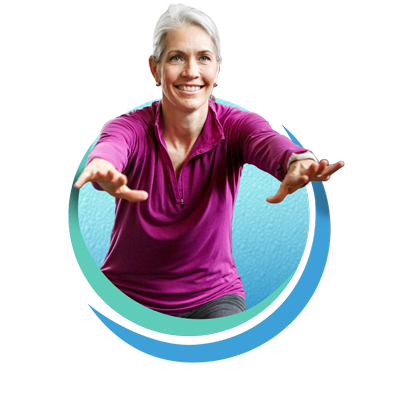
The Fear of the Fall
by Ann Gilbert
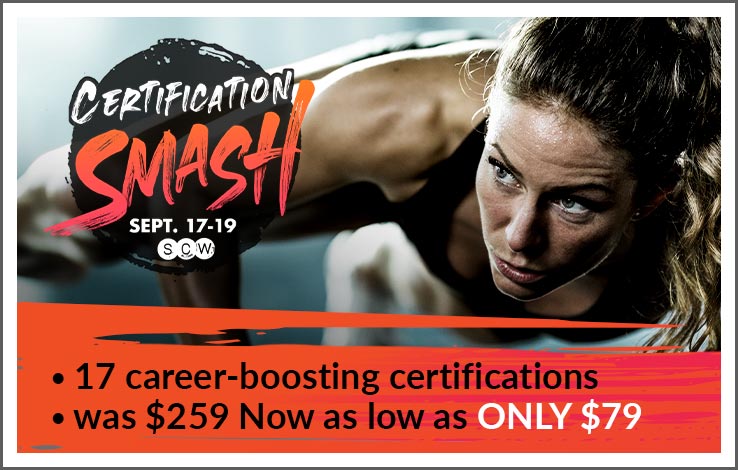 Each year, more than one in four older adults take a fall, but less than half tell their doctor. After the first fall, the chances of falling again double. According to Wikipedia, the fear of falling (FOF) is natural in most humans and animals. It was merely believed to be a result of the psychological trauma of the fall, also called the “post-fall syndrome.” Only titled in 1982, this syndrome has gained recognition as a health problem with seniors, many of whom have never experienced a fall. It seems older women are more prone to this issue. Risk factors that elevate such a fear include inactivity, loss of strength, dizziness, gait problems and the lack of ability to balance while standing.
Each year, more than one in four older adults take a fall, but less than half tell their doctor. After the first fall, the chances of falling again double. According to Wikipedia, the fear of falling (FOF) is natural in most humans and animals. It was merely believed to be a result of the psychological trauma of the fall, also called the “post-fall syndrome.” Only titled in 1982, this syndrome has gained recognition as a health problem with seniors, many of whom have never experienced a fall. It seems older women are more prone to this issue. Risk factors that elevate such a fear include inactivity, loss of strength, dizziness, gait problems and the lack of ability to balance while standing.
By the year 2025, as many as 70 million adults will be considered mature seniors. Experts state that 60% of the 70 million, will take a fall resulting in head trauma or broken bones (1 in 5), tissue damage and hip fractures, thus increasing what is called post-fall syndrome or a fear to continue normal activity. Activities that involve a lot of movement like yard work, playing with children, biking or fitness walking will be replaced with activities that involve sitting, reading, watching tv and playing cards. Most will then experience a loss of heart, bone, and muscle strength, as well as decreased independence, socialization, and overall quality of life. The bottom line is all these physical activities require a balance challenge, one in which there is contraction and coordination of muscles on all sides of the joint, allowing the body to function in the standing position.
According to the Centers for Disease Control, for people over 65 years old, the most common cause of injury and the number one reason for admission to a hospital comes from injuries sustained in a fall. The Centers for Disease Control (CDC) state that if balance is not challenged daily, then weakness can cause the fall. When it comes to prevention, maintaining independence, and enjoying a high quality of life, the focus is on increasing the strength of two major muscle groups: the legs and the core. Walking, going up stairs, getting in and out of the car, and stepping up and off a curb, causes the lower body to do the work. Stabilization is needed for rising from a chair or picking up an object from the floor, the torso (core) muscles are working. Many of our activities of daily life and gait assistance require strength and core training from the glutes. When you partner the two muscle groups, they work to prevent falling and assist in getting up off the ground.
The American College of Sports Medicine (ACSM) recommends that the mature adult participate in a strength training routine that includes as many as 6-8 exercises, working in opposition, at least 2-3 times per week. It is also recommended that muscles work unilaterally and address balance challenges while anchored on one foot. The need for flexibility training needs to remain a focus, as well as stretching the hip flexors and calf muscles, while strengthening the glutes and hamstrings. ACSM also recommends that the senior adult practice both dynamic and static patterns to assure the ability to function performing activities of daily life.
One of the most advantageous environments for keying in on these recommendations is in the pool. Training in the water provides aquatic properties, plus it acts as a cushion if the participant falls, allowing the buoyancy to keep them upright. Glute training in a pool is highly beneficial for preventing falls on land.
Here are a few ways to train BALANCE skills in the pool:
- Static single leg stances
- Dynamic single leg movement patterns
- Performing moves that alternate between anchored or grounded and rebounding
- Creating patterns that include a change in direction or visual focus
- Using music cueing and coaching techniques that recruit a response
Why train in the WATER?
- Participants experience less fear of falling when supported by buoyancy during water exercise. It allows for more aggressive movement and leads to an increase in strength in a shorter period than on land
- Participants experience a sense of independence while in the water and are open to socialization with others during a scheduled group class
- Training in all planes of motion; sagittal, frontal, and transverse, help increase functional ability when on land
- Participants work with an increased range of motion at each joint or articulation when performing repetitions in opposition to the water
Falling doesn’t need to be as scary as it seems. Knowing how to train the muscles and joints helps to calm the fear, plus it creates activity and movement for the mature adult. Buoyancy provides a sense of security and confidence. Improvements can be seen in participants who strengthen two to three times a week in a water. So, take the next step to increase balance and increase strength in the legs, hips, and core in the pool and overcome the fear of falling for good.
 About the Author, Ann Gilbert
About the Author, Ann Gilbert
Ann Gilbert is an owner of two Shapes Fitness for Women franchises, a sold-out International Presenter and is featured regularly in publications and on local TV. She is an SCW Faculty member leading a variety of certifications and is the Co-Founder and Choreographer for the innovative S.E.A.T. Chair Program, (Seated Exercise for Ageless Training). A WATERinMOTION® Master Trainer, Ann was awarded the ACE/IHRSA Personal Trainer of the Year award.
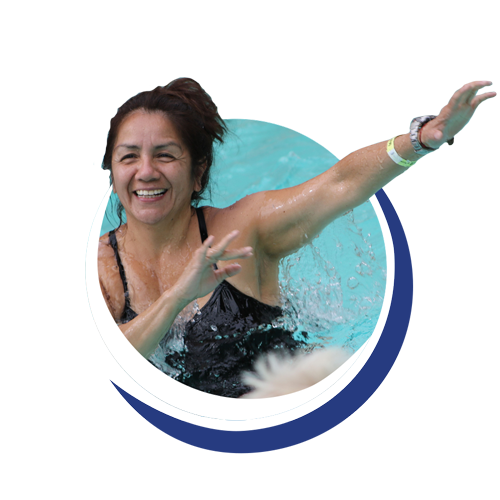
by Connie Warasila
Aquaphobia is defined as a persistent and abnormal fear of water and can be a real barrier for some people interested in participating in aquatic exercise. However, there are ways to introduce water exercise to aquaphobes so they also can enjoy this beneficial form of movement. With patience, understanding, and a bit of creativity, a successful water experience is not out of reach for those afraid of the water.
 The fear of water can develop from a variety of sources including a personal, direct experience (almost drowning), an indirect learning experience (witnessing a negative water experience), an auditory experience (reading or hearing a recounted experience) or subconscious learning, through dreams, early childhood experiences, or an innate need for self-protection. Regardless of how someone has developed this phobia, the techniques for overcoming it are the same.
The fear of water can develop from a variety of sources including a personal, direct experience (almost drowning), an indirect learning experience (witnessing a negative water experience), an auditory experience (reading or hearing a recounted experience) or subconscious learning, through dreams, early childhood experiences, or an innate need for self-protection. Regardless of how someone has developed this phobia, the techniques for overcoming it are the same.
As a water-fitness professional, encountering a student that is fearful of the water is very likely. Often this just appears as a fear of the deep end or of drowning in general. If a student arrives at a class and informs you they are afraid, it is possible to help them progress beyond their phobia. Just the fact that they are willing to attempt an aquatic exercise class tell you that the severity of their fear is probably moderate to mild, and that they have already progressed past the most debilitating stage.
Respect is the key when interacting with someone with a phobia. It is a very real experience. Understanding the severity and origin can aid in accommodating their needs. This goes a long way toward helping the student feel safe and comfortable. There are a few simple steps to take to assist the person with aquaphobia.
First, offer the student the opportunity to merely observe their first class from a comfortable place offering clear line of sight and sound. At the end, review some details about water program. For example, the structure of the class, the contact with the pool bottom, the head staying above the water, and the ability of the student to come and simply watch poolside again. A suggestion can be made to remain in the shallow water and wear a flotation belt or hold an aqua noodle to make them feel more at ease.
It may take some time for the client to progress into class, but baby steps, like sitting on the side of the pool, putting their feet in the water, standing in the water, or holding on to the pool side during the workout are helpful. Eventually the student may try some small range of motion movements as their confidence grows and finally release the pool side (with or without the flotation belt.) While this kind of progress can be very encouraging, always remember to respect a client’s needs. Continuous education about water and what it’s like to move in water will be helpful for the fearful participant.
Be certain to focus on the following topics:
Buoyancy: Explain the effect on the body, recognizing the feeling of weightlessness seems like a benefit of water exercise but may not be a welcome sensation to someone who fears water. Educate participants about core engagement to stabilize the body in water.
Water depth: Also, instruct exercisers about appropriate depth of water for successful shallow water exercise. A fearful student may opt to stay in more shallow water at first and gradually move to chest deep water over time.
Levels: There are five levels of exercise in water; Rebound, Power Rebound, Grounded, Neutral, and Suspension. Fearful students may choose to move in the grounded level, eventually adding more rebound as confidence grows. Some may never be comfortable with suspension, so modifications are important. Just remember to respect their fear, be patient, recruit help when necessary and allow the client to set the pace of their own progress.
Equipment: Those with aquaphobia may opt to add a buoyancy belt or hold onto a piece of buoyant equipment like an aqua noodle, kick board, or hand buoy to ensure staying above the water’s surface. Teach students proper technique while using equipment to avoid hand fatigue, shoulder tension or destabilization.
There may come a time when the student has progressed so far that you almost forget they ever had a fear of water, until a traumatic experience occurs causing the person to slip or submerge. The reaction may be mild or a complete breakdown and set-back. Offer assistance but avoid making mention in front of other participants. Know that a regression is possible and may require additional patience and understanding.
Remember that fitness leaders have a unique opportunity to help others progress not only functionally, but also in personally. The confidence gained through completing a group fitness class or maybe even overcoming a fear, has lasting, positive effects outside of the gym and through life.
 About the Author, Connie Warasila
About the Author, Connie Warasila
Connie Warasila is the choreographer emeritus for WATERinMOTION®, faculty member of SCW Fitness Education, and certified by ACE, AEA, AFAA, Balanced Body, The Braining Center, Yoga Fit, Schwinn®, Reebok Cycle, and Moms in Motion. Awarded the Aquatic Exercise Association Fitness Professional of the Year, Connie has over 30 years of teaching experience in the USA and abroad. She has recently decided to further her education and pursue a degree in Finance and Accounting to help the fight against Human Trafficking.
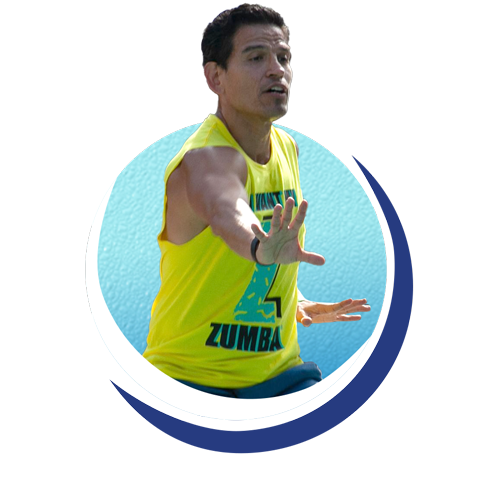
by Jenna Bostic
The infectious beat of the Latin music, the smiles and laughter of the participants in the pool, the warmth of the sun on your face…. these are some things that you will experience as an Aqua Zumba® instructor!
 Aqua Zumba® was introduced in 2009 by the creator of Zumba Fitness®, Beto Perez, and the Aqua Zumba® team at the IAFC in Orlando, FL. The program is based on the same concept as Zumba®, using the same Latin & international rhythms, while adapting the movements to the aquatic environment, and combining the adapted core Zumba® moves with basic aqua fitness moves. Since that first introduction, the Aqua Zumba® program has developed into a tight knit community, where the instructors work together to help make this program successful!
Aqua Zumba® was introduced in 2009 by the creator of Zumba Fitness®, Beto Perez, and the Aqua Zumba® team at the IAFC in Orlando, FL. The program is based on the same concept as Zumba®, using the same Latin & international rhythms, while adapting the movements to the aquatic environment, and combining the adapted core Zumba® moves with basic aqua fitness moves. Since that first introduction, the Aqua Zumba® program has developed into a tight knit community, where the instructors work together to help make this program successful!
TEACHING AQUA ZUMBA®
As an Aqua Zumba® instructor, we teach 100% on the deck, so that the students can see the movements and follow the choreography. We use what we call the Zumba® Formula, the same as in Zumba®, so that each song begins a new choreography, and is driven by the music. Teaching on the deck can be a challenge for instructors, and it takes practice to build up to. Instructors will see improvements in balance as well as endurance, and they will learn to coach and motivate their students, to make it easier on them, and more fun for the students. Personality is so important, and it brings the fun to this amazing program!
In the past year, Zumba® has created even more avenues for instructors to teach Aqua Zumba® through the virtual world. You can find Aqua Zumba® classes, both live and virtual at Zumba.com. This has opened a whole new world and given instructors more opportunities to teach Aqua Zumba®, both in-person and by livestream.
JOB OPPORTUNITIES
There are many benefits to being a licensed Aqua Zumba® instructor, and it may even present more job opportunities. Of course, you can teach this program at gyms, YMCA’s and community centers, but you may also find other locations such as hotels & resorts, apartment & condo complexes, communities and country clubs. As an Aqua Zumba® instructor, I have had the opportunity on several occasions to teach Aqua Zumba® in Mexico and the Dominican Republic, at beautiful resorts, in the role as the fitness pro! What better way to spend your vacation…. teaching in paradise, while helping others to have a blast and stay fit!
THE AQUA ZUMBA® COMMUNITY
One of my favorite things about the Aqua Zumba® program is the community! We all work together and support one another, to make this a successful, fun & inclusive program. The community consists of Aqua Zumba® ZES™ (Zumba Education Specialists), ZJ’s™ (Zumba Jammers) and Aqua Zumba® instructors, who are all working together towards the same goal….to spread the Aqua Zumba® love! Education is extremely important, since this program is technically very different than Zumba® on land, and there is a lot of continuing education available to instructors through monthly choreographies on Zumba.com, ZIN™ Jam Sessions (3-hour choreography sessions) and community Facebook groups. We also like to teach together for special events, master classes, and charity events.
BECOMING AN AQUA ZUMBA® INSTRUCTOR
To become a licensed Aqua Zumba® instructor, you must first take the Zumba® Basic 1 training to become a licensed Zumba® Instructor and join the ZIN™ (Zumba Instructor’s Network). At this training, you will learn the basic structure of Zumba®, and how to put your class and choreographies together. Then you may take an Aqua Zumba® training to get your license to teach Aqua Zumba® classes. Both live and virtual trainings may be found on Zumba.com.
Aqua Zumba® is such a fun and rewarding class to teach! Seeing all the happy faces in the pool and hearing the success stories from students who may have lost weight, have made long lasting friendships, or improved their fitness level makes it all worth it! People keep coming back because of the way their Aqua Zumba® instructor makes them feel!
You can experience Aqua Zumba® at Midwest MANIA®, October 1-3. A Zumba® instructor training is being offered on Thursday, September 30, and an Aqua Zumba® session is on the MANIA® schedule for Friday morning. This is the perfect time to learn something new and boost your fitness career.
 About the Author, Jenna Bostic
About the Author, Jenna Bostic
Jenna Bostic is an international Zumba® Education Specialist for Zumba® Fitness. She has been presenting for Zumba® since 2008 and teaches Zumba® Basic 1, Zumba® Basic 2, Zumba® Step, Zumba® Toning & Aqua Zumba® instructor trainings. Jenna was the featured ZES for the one-on-one choreography on the ZIN #35 DVD and on ZIN TV for both Aqua Zumba® & Zumba® Toning. Jenna has a degree in Exercise & Sport Science and holds ACE, AFAA and AEA certifications in group fitness, personal training, and aqua fitness.

I don’t know about you, but when I make chocolate chip cookies, half the batter winds up being eaten before it is even formed into cookies. With that said, raw eggs aren’t so safe, so here’s a tasty version that is healthy and harmless. Enjoy it by the spoonful or as a fun dessert dip.
INGREDIENTS:
- 1 can chickpeas (drained, save the aquafaba liquid for another recipe)
- 1-2 tsp vanilla extract (to your taste)
- ¼ cup peanut or almond butter (can choose your favorite nut butter, but consistency could change)
- 1/3 cup chocolate chips (or whatever type of chip you like)
- 2 tbsp ground flax or almond flour to bind (depending on the nut butter chosen)
- Milk (your choice), add slowly if batter too thick until consistency is smooth
- Less than ¼ tsp salt
- Less than ¼ tsp baking soda
- Sweeten to taste, can use brown sugar, maple syrup, agave, or sugar alternative
INSTRUCTIONS:
- Add chickpeas, nut butter, vanilla, salt, baking soda and sweetener to a food processor and blend
- Add ground flax or flour to bind
- Add milk to smooth consistency
- Taste & adjust accordingly adding either sweetener, salt, milk, or binder
- Blend again
- Add chocolate chips and mix in
- Place in a bowl & serve with fruit
You may need to make small tweaks to get the right taste and consistency, but if all goes well, your guests should be amazed and surprised to find out this is healthy and nutritious.
We’re always looking for great content highlighting the newest things in the world of aquatic fitness. Please submit your article directly to [email protected] for immediate consideration!
Give us your feedback on what interests you, and maybe YOU will make it in the SCW Tidal Waves!
Tidal Waves, January 2024
Tidal Waves, December 2023
Tidal Waves, November 2023
Tidal Waves, October 2023
Tidal Waves, September 2023
Tidal Waves, August 2023
Tidal Waves, July 2023
Tidal Waves, June 2023
Tidal Waves, May 2023
Tidal Waves, April 2023
Tidal Waves, March 2023
Tidal Waves, January 2023
Tidal Waves, November 2022
Tidal Waves, September 2022
Tidal Waves, July 2022
Tidal Waves, June 2022
Tidal Waves, May 2022
Tidal Waves, April 2022
Tidal Waves, March 2022
Tidal Waves, February 2022
Tidal Waves, January 2022
Tidal Waves, November 2021
Tidal Waves, October 2021
Tidal Waves, August 2021
Tidal Waves, July 2021
Tidal Waves, June 2021
Tidal Waves, May 2021
Tidal Waves, April 2021
Tidal Waves, March 2021
Tidal Waves, January 2021
Tidal Waves, November 2020
Tidal Waves, September 2020
Tidal Waves, July 2020
Tidal Waves, February 2020
Tidal Waves, November 2019

